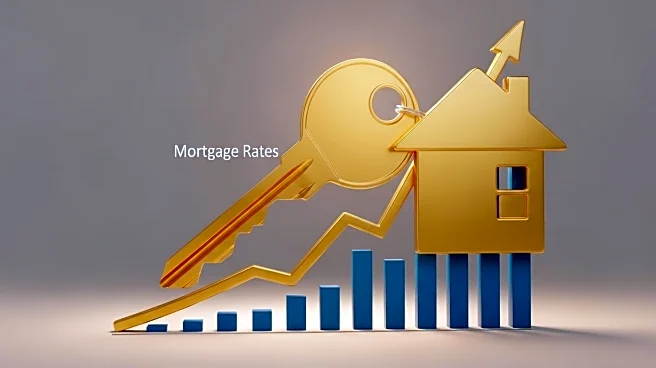What's Happening?
The Federal Reserve's recent interest rate cut has influenced mortgage rate trends, with a potential decrease in rates to 5.9% by the end of 2026. Currently, mortgage rates stand at 6.34%, and a reduction to 6% could save borrowers nearly $30,000 over 30 years on a $340,000 loan for a median-priced home. A further drop to 5.9% would increase savings to almost $40,000 over the life of the mortgage. The National Association of Realtors® anticipates that a 6% mortgage rate could significantly boost home sales, particularly in metro areas like Atlanta, Dallas, and Minneapolis. However, rates might rise back to around 6.4% by the end of the year, influenced by inflation data, government actions, and Federal Reserve policy changes.
Why It's Important?
The potential decrease in mortgage rates could have a substantial impact on the U.S. housing market by making homeownership more affordable. This could lead to increased home sales, benefiting real estate markets in various metropolitan areas. Lower mortgage rates reduce monthly payments, making it easier for potential buyers to enter the market, which could stimulate economic activity in related sectors such as construction and home improvement. However, the possibility of rates rising again underscores the importance of monitoring economic indicators and policy shifts, as these will determine the long-term health of the housing market.
What's Next?
Future movements in mortgage rates will depend on several factors, including inflation trends, government fiscal policies, and further actions by the Federal Reserve. Stakeholders in the housing market, including buyers, sellers, and real estate professionals, will need to stay informed about these developments to make strategic decisions. If rates do decrease as projected, it could lead to a surge in home buying activity, but any upward adjustments could temper this growth. The ongoing economic environment will require careful navigation by all parties involved.
Beyond the Headlines
The potential for lower mortgage rates highlights broader economic dynamics, such as the balance between stimulating growth and controlling inflation. The Federal Reserve's actions reflect a delicate approach to managing economic stability, which has implications for consumer confidence and spending. Additionally, the housing market's response to these changes could influence broader economic trends, including employment in construction and real estate sectors.










